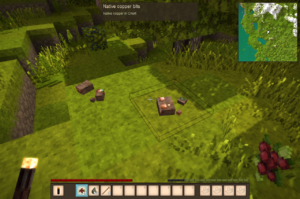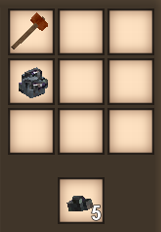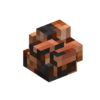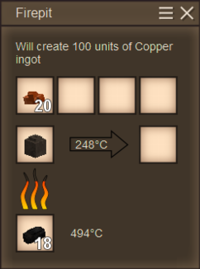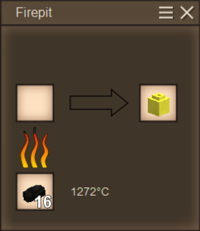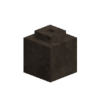Casting/es: Difference between revisions
(Created page with "Fundición") |
(Updating to match new version of source page) |
||
| (40 intermediate revisions by 2 users not shown) | |||
| Line 1: | Line 1: | ||
<languages/>'''Casting''' is the process of smelting ore into a liquid state and molding the molten metal into quick and convenient tool heads and ingots. While not inherently the most important facet of metallurgy, it is one of the first gateways by which a seraph can forge ahead into the throes of advancement and survival. | <languages/> | ||
{{Outdated}} | |||
<div lang="en" dir="ltr" class="mw-content-ltr"> | |||
'''Casting''' is the process of smelting ore into a liquid state and molding the molten metal into quick and convenient tool heads and ingots. While not inherently the most important facet of metallurgy, it is one of the first gateways by which a seraph can forge ahead into the throes of advancement and survival. | |||
</div> | |||
__TOC__ | __TOC__ | ||
<div class="mw-translate-fuzzy"> | |||
La '''fundición''' es el proceso de fundir el mineral en estado líquido y moldear el metal fundido en rápidas y convenientes cabezas de herramientas y lingotes. Aunque no es intrínsecamente la faceta más importante de la metalurgia, es una de las primeras puertas por las que un jugador puede adentrarse en la agonía del avance y la supervivencia. | |||
__TOC__ | |||
== Materiales necesarios == | |||
Para fundir metal, un jugador necesita un [[crucible/es|crisol]] y [[mold/es|moldes]], una [[firepit/es|hoguera]], combustible ([[firewood/es|leña]], [[peat/es|turba]], [[coal/es|carbón]], [[charcoal/es|carbón vegetal]], o [[coke/es|coque]]), y pepitas de mineral. Los jugadores también pueden usar trozos de metal como fuente alternativa de metal, que se obtienen combinando un cabezal de herramienta de metal o un [[ingot/es|lingote]] con un [[chisel/es|cincel]] en la grilla de fabricación. | |||
</div> | |||
<div lang="en" dir="ltr" class="mw-content-ltr"> | |||
To cast metal, a player needs a {{ll|crucible|crucible}} and {{ll|molds|molds}}, a {{ll|firepit|firepit}}, fuel ({{ll|firewood|firewood}}, {{ll|peat|peat}}, {{ll|coal|coal}}, {{ll|charcoal|charcoal}}, or {{ll|coke|coke}}), and ore nuggets. Players can also use metal bits as an alternate source of metal, obtained by combining a metal tool head or an {{ll|ingot|ingot}} with a {{ll|chisel|chisel}} in the crafting grid. | |||
</div> | |||
<div class="mw-translate-fuzzy"> | |||
Mientras que la mayoría de las pepitas de mineral pueden arrojarse al crisol y fundirse, debido a los altos umbrales de temperatura y a la falta de combustibles que alcancen esos umbrales, el hierro, el hierro meteórico, el acero ampolloso y el acero deben ser fundido en un [[bloomery/es|horno bajo]], [[smithing/es|forjado]] en un yunque, o [[steel_making/es|carburizado]] para poder ser utilizados. | |||
</div> | |||
<div class="mw-translate-fuzzy"> | |||
== Obtención de metales == | |||
[[File:Native copper in chert.png|300px|thumbnail|right|El mineral de cobre puede encontrarse en pequeños yacimientos superficiales de piedra.]] | |||
Las pepitas de mineral se pueden encontrar de cuatro maneras: [[panning/es|bateando]], [[cracked_vessel/es|vasijas de mineral agrietadas]], comprándolas directamente a un comerciante, o a través de los trozos de mineral de la superficie. | |||
</div> | |||
== | <div lang="en" dir="ltr" class="mw-content-ltr"> | ||
[[File:Native copper in chert.png|300px|thumbnail|right|Copper ore can be found in small stone surface deposits.]] | [[File:Native copper in chert.png|300px|thumbnail|right|Copper ore can be found in small stone surface deposits.]] | ||
</div> | |||
<div lang="en" dir="ltr" class="mw-content-ltr"> | |||
* | Ore nuggets can be found in one of four ways: {{ll|panning|panning}}, {{ll|cracked vessel|cracked ore vessels}}, buying them directly from a trader, or via surface ore bits. | ||
* [[Trading#Commodities| | </div> | ||
* | |||
** | <div class="mw-translate-fuzzy"> | ||
** | * El bateo de arena, grava o tierra ósea puede arrojar una probabilidad del 15% o menos de recibir pepitas de cobre, oro, plata o estaño, lo que puede ser bueno en un apuro. | ||
* Las vasijas de mineral agrietado contienen un pequeño surtido de pepitas de bismuto, cromo, cobre, oro, plomo, plata, estaño, titanio y zinc; estas vasijas pueden encontrarse en [[ruins/es|ruinas]] superficiales o subterráneas o ser vendidas por comerciantes [[Trading#Treasure_Hunter/es|Cazadores de tesoros]]. | |||
* Los comerciantes de [[Trading#Commodities|materias primas]] podrían tener pepitas de bismuto, cobre, estaño y zinc circulando en su rotación actual de mercancías. | |||
* Los trozos de mineral de superficie pueden encontrarse en la mayoría de los tipos de [[rock/es|roca]], a excepción de la bauxita, la halita, la obsidiana, la roca volcánica escoria, la roca de impacto suevita y la roca volcánica toba. Estos trozos de mineral contienen una sola pepita que se puede recoger rompiendo la piedra con la mano vacía o llena (ranura de la barra caliente activa), y son un indicador de [[Ore_Deposits/es|yacimientos]] subterráneos más grandes. | |||
** Dependiendo de la combinación de mineral y piedra, pueden mezclarse con el entorno y pasar desapercibidos con facilidad. | |||
** Aunque la roca de impacto suevita no es por sí misma una roca hospedadora de mineral, su presencia es un [[Meteorite/es|indicador]] de hierro meteórico. | |||
Se recomienda añadir waypoints a cualquier ubicación de mineral para posteriores operaciones de recogida, especialmente en lo que respecta a un inventario completo o a una falta de necesidad actual de ese mineral en concreto. | |||
</div> | |||
== | <div lang="en" dir="ltr" class="mw-content-ltr"> | ||
An alternate source of metal comes from {{ll|metal bit|metal bits}}, which can be obtained by combining a {{ll|chisel|chisel}} with any metal tool head or {{ll|ingot|ingot}} in the crafting grid. This allows players to break down metal items and re-cast them for other uses. | |||
</div> | |||
<div class="mw-translate-fuzzy"> | |||
== Preparación del metal == | |||
[[File:Nugget_extraction.png|200px|thumbnail|right|Un martillo de cobre extrae mineral de un rico trozo de hierro.]] | |||
Mientras que las pepitas sueltas están listas para ser fundidas y no requieren preparación adicional, las pepitas de los trozos regulares y cristalizados están atrapadas en su piedra madre, como el basalto o la kimberlita, y son inutilizables hasta que se procesan. Los trozos se colocan en la grilla de fabricación del inventario bajo cualquier nivel de martillo, que aplasta la piedra y extrae las pepitas de su interior. | |||
</div> | |||
<div lang="en" dir="ltr" class="mw-content-ltr"> | |||
[[File:Nugget_extraction.png|200px|thumbnail|right|A copper hammer extracting ore from a rich chunk of iron.]] | [[File:Nugget_extraction.png|200px|thumbnail|right|A copper hammer extracting ore from a rich chunk of iron.]] | ||
</div> | |||
<div lang="en" dir="ltr" class="mw-content-ltr"> | |||
While loose nuggets are ready to be smelted and do not require additional preparation, the nuggets within regular and crystallized chunks are trapped within their parent stone, such as basalt or kimberlite, and are otherwise unusable until they are further processed. Chunks are placed in the inventory crafting grid under any tier of hammer, which crushes the stone and extracts the nuggets inside. | |||
</div> | |||
* | Hay cuatro tipos de trozos de mineral: pobre, medio, rico y abundante. | ||
* | |||
* | * Los trozos pobres son el tipo de trozo más común y pueden encontrarse en todos los estratos en los que hay minerales. Un trozo pobre regular ofrecerá 3 pepitas y un trozo pobre cristalizado ofrecerá 6 pepitas. | ||
* | * Los trozos medianos, al igual que los trozos pobres, se pueden encontrar en todos los estratos en los que hay minerales disponibles. Un trozo medio regular ofrecerá 4 pepitas y un trozo medio cristalizado ofrecerá 8 pepitas. | ||
* Los trozos ricos son poco comunes y se encuentran en menos estratos que los trozos pobres y medianos. Un trozo rico regular ofrecerá 5 pepitas y un trozo rico cristalizado ofrecerá 10 pepitas. | |||
* Los trozos abundantes tampoco son comunes y, en los estratos en los que son accesibles, es más probable encontrar mayores cantidades de mineral rico que de mineral abundante. Un trozo abundante normal ofrece 7 pepitas y un trozo abundante cristalizado ofrece 14 pepitas. | |||
{{Protip | {{Protip | ||
|Icon=Ore-bountiful-nativecopper-basalt.png | |Icon=Ore-bountiful-nativecopper-basalt.png | ||
| | |Cada estrato rocoso tendrá diferentes generaciones de menas y trozos - los trozos de cobre pobre y medio se pueden encontrar en arenisca, pero los cuatro tipos de trozos de cobre se pueden encontrar en basalto - que se encuentran en el manual debajo de sus respectivos metales. Llevar un registro de las generaciones de menas y trozos puede garantizar un suministro constante de pepitas para las coladas actuales y futuras.}} | ||
== | <div class="mw-translate-fuzzy"> | ||
== Fundición de metales == | |||
[[File:Crucible input slot.PNG|200px|thumbnail|right|Crisol en la ranura de entrada.]] | |||
El primer paso para procesar el metal es la fundición, que se realiza en un crisol. Un solo crisol puede contener hasta cuatro pilas completas de 128 pepitas, pero sólo se puede fundir en él un metal puro o una aleación a la vez. Cada pepita equivale a 5 unidades de metal, lo que significa que un crisol completo puede contener hasta el equivalente a 2560 unidades. La mayoría de las herramientas o lingotes requieren 100 unidades (20 pepitas) por molde, con la excepción de algunos objetos más grandes, como placas, yunques y bloques de metal, que pueden requerir bastante más. | |||
</div> | |||
<div lang="en" dir="ltr" class="mw-content-ltr"> | |||
[[File:Crucible input slot.PNG|200px|thumbnail|right|Crucible in the input slot.]] | [[File:Crucible input slot.PNG|200px|thumbnail|right|Crucible in the input slot.]] | ||
</div> | |||
<div lang="en" dir="ltr" class="mw-content-ltr"> | |||
The first step to processing metal is smelting, which is performed in a crucible. A single crucible can hold up to four complete stacks of 128 nuggets, however only one pure metal or alloy may be smelted within the crucible at a time. Each nugget is equivalent to 5 units of metal, which means that a full crucible can hold up to the equivalent of 2560 units. Most tools or ingots require 100 units (20 nuggets) per mold, with the exception of a few larger items, such as plates, anvils, and metal blocks, which can require significantly more. | The first step to processing metal is smelting, which is performed in a crucible. A single crucible can hold up to four complete stacks of 128 nuggets, however only one pure metal or alloy may be smelted within the crucible at a time. Each nugget is equivalent to 5 units of metal, which means that a full crucible can hold up to the equivalent of 2560 units. Most tools or ingots require 100 units (20 nuggets) per mold, with the exception of a few larger items, such as plates, anvils, and metal blocks, which can require significantly more. | ||
</div> | |||
Las proporciones de pepitas que no cumplen este requisito numérico crean cantidades de metal demasiado pequeñas para la fundición. | |||
La fundición de metales puros es muy sencilla, ya que se puede utilizar el mismo tipo de pepita durante todo el proceso. La fundición de aleaciones es algo más complicada, ya que las proporciones de cada aleación difieren y hay que colocar en el crisol la mezcla adecuada de varios tipos de pepitas antes de calentarlas. | |||
El número de pepitas que pueden utilizarse para una aleación es algo variable, lo que puede resultar ventajoso si ciertas pepitas escasean. Por ejemplo, una aleación de bronce bismuto requiere entre un 10 y un 20% de bismuto, entre un 50 y un 70% de cobre y entre un 20 y un 30% de zinc o, desglosado en pepitas, entre 2 y 4 pepitas de bismuto, entre 10 y 14 pepitas de cobre y entre 4 y 6 pepitas de zinc. | |||
Si se dispone de más zinc, puede ser suficiente una proporción de 2 pepitas de bismuto, 12 de cobre y 6 de zinc, y viceversa, si se dispone de más bismuto, es aceptable una proporción de 4 pepitas de bismuto, 12 de cobre y 4 de zinc. | |||
=== | <div class="mw-translate-fuzzy"> | ||
=== Preparación del crisol === | |||
[[File:Crucible output slot.png|200px|thumbnail|right|Crisol totalmente calentado en la ranura de salida.]] | |||
# Coloque el crisol en la ranura de entrada (izquierda) de la hoguera para acceder a la GUI del crisol | |||
# Añada pepitas en una o más de las cuatro ranuras de entrada de la GUI del crisol. | |||
# Cuando se haya alcanzado una proporción de aleación adecuada, la interfaz gráfica de usuario mostrará la cantidad en unidades de metal y el metal puro o la aleación que se producirá a partir del proceso de fundición. | |||
# Cuando las pepitas se hayan licuado por completo, el crisol incandescente se desplazará a la ranura de salida (derecha) de la hoguera. El crisol empezará a enfriarse si permanece en la ranura de salida o se aleja del calor, y si el crisol se enfría lo suficiente sin ser fundido, el metal licuado se solidificará y quedará inutilizable hasta que se caliente de nuevo. | |||
</div> | |||
<div lang="en" dir="ltr" class="mw-content-ltr"> | |||
[[File:Crucible output slot.png|200px|thumbnail|right|Fully heated crucible in the output slot.]] | [[File:Crucible output slot.png|200px|thumbnail|right|Fully heated crucible in the output slot.]] | ||
</div> | |||
<div lang="en" dir="ltr" class="mw-content-ltr"> | |||
# Place the crucible in the input slot (left) of the firepit to access the crucible GUI | # Place the crucible in the input slot (left) of the firepit to access the crucible GUI | ||
# Add nuggets into one or more of the four input slots of the crucible GUI. | # Add nuggets into one or more of the four input slots of the crucible GUI. | ||
| Line 53: | Line 118: | ||
# Add fuel and light the fire pit. Selecting the appropriate fuel is paramount to raising and maintaining the temperature of the metal above its particular smelting temperature, which liquifies the nuggets. | # Add fuel and light the fire pit. Selecting the appropriate fuel is paramount to raising and maintaining the temperature of the metal above its particular smelting temperature, which liquifies the nuggets. | ||
# When the nuggets have been fully liquified, the glowing crucible will shift to the output slot (right) of the firepit. The crucible will begin to cool down if it remains in the output slot or is otherwise pulled away from the heat, and if the crucible cools down far enough without being casted, the liquefied metal will be rendered solid and be otherwise unusable until heated up again. | # When the nuggets have been fully liquified, the glowing crucible will shift to the output slot (right) of the firepit. The crucible will begin to cool down if it remains in the output slot or is otherwise pulled away from the heat, and if the crucible cools down far enough without being casted, the liquefied metal will be rendered solid and be otherwise unusable until heated up again. | ||
</div> | |||
'' | ''Añadir o quitar minerales una vez iniciado el proceso reiniciará la temperatura''. | ||
== | <div class="mw-translate-fuzzy"> | ||
== Fundición de metales == | |||
Una vez que el metal fundido y licuado está disponible en un crisol, está listo para ser fundido en moldes para lingotes o herramientas. | |||
</div> | |||
=== | <div lang="en" dir="ltr" class="mw-content-ltr"> | ||
Once smelted, liquified metal is available within a crucible, it is ready to be cast within ingot or tool molds. | |||
</div> | |||
<div class="mw-translate-fuzzy"> | |||
=== Rellenado de Moldes === | |||
# Coloque el molde que desee rellenar sobre una superficie sólida. Los moldes de herramientas ocupan un bloque, mientras que las lingoteras pueden colocarse de dos en dos. | |||
# Con el crisol incandescente en una mano vacía (ranura de la barra caliente activa), selecciona el molde deseado con la cruceta de la pantalla y vierte el metal líquido en ese molde. | |||
# Cuando el molde esté lleno, ya no se podrá añadir metal al molde. | |||
# El metal alcanzará varios estados de enfriamiento en el molde -de líquido a blando, a endurecido y a frío- que pueden identificarse con la temperatura actual del artículo en la GUI del molde. | |||
# Cuando la herramienta o el lingote están endurecidos o completamente fríos, pueden desmoldearse. | |||
</div> | |||
<div lang="en" dir="ltr" class="mw-content-ltr"> | |||
# Place the required mold to be filled on a solid surface. Tool molds occupy one block while ingot molds may be placed two to a block. | # Place the required mold to be filled on a solid surface. Tool molds occupy one block while ingot molds may be placed two to a block. | ||
# With the glowing crucible in an empty hand (active hotbar slot), select the desired mold with the display crosshairs and pour the liquid metal into that mold. | # With the glowing crucible in an empty hand (active hotbar slot) and a pair of {{ll|tongs|tongs}} in your {{ll|off-hand|off-hand}}, select the desired mold with the display crosshairs and pour the liquid metal into that mold. | ||
# When the mold is filled, metal will no longer be allowed to be added into the mold. | # When the mold is filled, metal will no longer be allowed to be added into the mold. | ||
# The metal will reach various states of cooling in the mold- from liquid to soft to hardened to cold - which can be identified with the current item temperature in the mold GUI. | # The metal will reach various states of cooling in the mold- from liquid to soft to hardened to cold - which can be identified with the current item temperature in the mold GUI. | ||
# When the tool or ingot is hardened or completely cold, it can be removed from the mold. | # When the tool or ingot is hardened or completely cold, it can be removed from the mold. | ||
</div> | |||
Si se recoge un molde antes de que el metal esté endurecido o frío, se perderá el material blando o líquido. Posteriormente, no se puede recoger un molde parcialmente lleno, aunque el metal esté frío, porque no hay activos disponibles para metales demasiado pequeños para ser fundidos y utilizados en su totalidad. | |||
{{Protip | {{Protip | ||
|Icon=crucible.png | |Icon=crucible.png | ||
| | |No se puede añadir metal líquido de dos tipos diferentes a un molde para obtener una aleación. Los metales puros y las aleaciones deben calentarse y licuarse dentro del crisol antes de ser vertidos.}} | ||
=== | === Disponibilidad de moldes === | ||
{|class="wikitable sortable" style="text-align:center; width: 80%;" | {|class="wikitable sortable" style="text-align:center; width: 80%;" | ||
|- | |- | ||
! width="5%" | Mold | ! width="5%" | <span lang="en" dir="ltr" class="mw-content-ltr">Mold</span> | ||
! width="9%" | Mold Type | ! width="9%" | <span lang="en" dir="ltr" class="mw-content-ltr">Mold Type</span> | ||
! width="9%" | Tool Type | ! width="9%" | <span lang="en" dir="ltr" class="mw-content-ltr">Tool Type</span> | ||
! width="15%" | Uses | ! width="15%" | <span lang="en" dir="ltr" class="mw-content-ltr">Uses</span> | ||
|- | |- | ||
|[[File:Toolmold-burned-anvil.png|100px]] | |[[File:Toolmold-burned-anvil.png|100px]] | ||
|''' | |'''{{ll|Anvil|<span lang="en" dir="ltr" class="mw-content-ltr">Anvil</span>}}''' | ||
|Crafting | |<span lang="en" dir="ltr" class="mw-content-ltr">Crafting</span> | ||
|Manual and mechanized smithing | |<span lang="en" dir="ltr" class="mw-content-ltr">Manual and mechanized smithing.</span> | ||
|- | |- | ||
|[[File:Toolmold-burned-axe.png|100px]] | |[[File:Toolmold-burned-axe.png|100px]] | ||
|''' | |'''{{ll|Axe|<span lang="en" dir="ltr" class="mw-content-ltr">Axe</span>}}''' | ||
|Harvesting | |<span lang="en" dir="ltr" class="mw-content-ltr">Harvesting</span> | ||
|Chopping leaf, plant, and wood blocks, including trees, logs, planks, fences, gates, and other wooden building components; creates firewood | |<span lang="en" dir="ltr" class="mw-content-ltr">Chopping leaf, plant, and wood blocks, including trees, logs, planks, fences, gates, and other wooden building components; creates firewood.</span> | ||
|- | |- | ||
|[[File:Toolmold-burned-blade-falx.png|100px]] | |[[File:Toolmold-burned-blade-falx.png|100px]] | ||
|'''Falx blade''' | |'''{{ll|Falx|<span lang="en" dir="ltr" class="mw-content-ltr">Falx blade</span>}}''' | ||
|Combat | |<span lang="en" dir="ltr" class="mw-content-ltr">Combat</span> | ||
|Mob damage, melee combat weapon | |<span lang="en" dir="ltr" class="mw-content-ltr">Mob damage, melee combat weapon.</span> | ||
|- | |- | ||
|[[File:Toolmold-burned-hammer.png|100px]] | |[[File:Toolmold-burned-hammer.png|100px]] | ||
|''' | |'''{{ll|Hammer|<span lang="en" dir="ltr" class="mw-content-ltr">Hammer</span>}}''' | ||
|Crafting | |<span lang="en" dir="ltr" class="mw-content-ltr">Crafting</span> | ||
|Crushing ores, crystal clusters, and certain soft stones; crafting components for mechanical power, item transportation, and steel carburization; polishing stone; cutting stone brick | |<span lang="en" dir="ltr" class="mw-content-ltr">Crushing ores, crystal clusters, and certain soft stones; crafting components for mechanical power, item transportation, and steel carburization; polishing stone; cutting stone brick.</span> | ||
|- | |- | ||
|[[File:Toolmold-burned-helvehammer.png|100px]] | |[[File:Toolmold-burned-helvehammer.png|100px]] | ||
|''' | |'''{{ll|Helvehammer|<span lang="en" dir="ltr" class="mw-content-ltr">Helvehammer</span>}}''' | ||
|Crafting | |<span lang="en" dir="ltr" class="mw-content-ltr">Crafting</span> | ||
|Mechanized smithing | |<span lang="en" dir="ltr" class="mw-content-ltr">Mechanized smithing.</span> | ||
|- | |- | ||
|[[File:Toolmold-burned-hoe.png|100px]] | |[[File:Toolmold-burned-hoe.png|100px]] | ||
|''' | |'''{{ll|Hoe|<span lang="en" dir="ltr" class="mw-content-ltr">Hoe</span>}}''' | ||
|Crafting | |<span lang="en" dir="ltr" class="mw-content-ltr">Crafting</span> | ||
|Tilling and converting soil for farming | |<span lang="en" dir="ltr" class="mw-content-ltr">Tilling and converting soil for farming.</span> | ||
|- | |- | ||
|[[File:Ingotmold-burned.png|100px]] | |[[File:Ingotmold-burned.png|100px]] | ||
|''' | |'''{{ll|Ingots|<span lang="en" dir="ltr" class="mw-content-ltr">Ingot</span>}}''' | ||
|Crafting | |<span lang="en" dir="ltr" class="mw-content-ltr">Crafting</span> | ||
|Ingot distribution, which can be used for manual and mechanized smithing and crafting components | |<span lang="en" dir="ltr" class="mw-content-ltr">Ingot distribution, which can be used for manual and mechanized smithing and crafting components.</span> | ||
|- | |- | ||
|[[File:Toolmold-burned-lamellae.png|100px]] | |[[File:Toolmold-burned-lamellae.png|100px]] | ||
|''' | |'''{{ll|lamellar armor|<span lang="en" dir="ltr" class="mw-content-ltr">Lamallae</span>}}''' | ||
|Combat | |<span lang="en" dir="ltr" class="mw-content-ltr">Combat</span> | ||
|Creating and repairing body lamellar armor | |<span lang="en" dir="ltr" class="mw-content-ltr">Creating and repairing body lamellar armor.</span> | ||
|- | |- | ||
|[[File:Toolmold-burned-pickaxe.png|100px]] | |[[File:Toolmold-burned-pickaxe.png|100px]] | ||
|''' | |'''{{ll|Pickaxe|<span lang="en" dir="ltr" class="mw-content-ltr">Pickaxe</span>}}''' | ||
|Harvesting | |<span lang="en" dir="ltr" class="mw-content-ltr">Harvesting</span> | ||
|Mining ceramic, rock, stone, ore, metal, and ice blocks | |<span lang="en" dir="ltr" class="mw-content-ltr">Mining ceramic, rock, stone, ore, metal, and ice blocks.</span> | ||
|- | |- | ||
|[[File:Toolmold-burned-prospectingpick.png|100px]] | |[[File:Toolmold-burned-prospectingpick.png|100px]] | ||
|''' | |'''{{ll|Prospecting Pick|<span lang="en" dir="ltr" class="mw-content-ltr">Prospecting Pick</span>}}''' | ||
|Harvesting | |<span lang="en" dir="ltr" class="mw-content-ltr">Harvesting</span> | ||
|Damaging rock blocks for long and short range ore and mineral detection | |<span lang="en" dir="ltr" class="mw-content-ltr">Damaging rock blocks for long and short range ore and mineral detection.</span> | ||
|- | |- | ||
|[[File:Toolmold-burned-shovel.png|100px]] | |[[File:Toolmold-burned-shovel.png|100px]] | ||
|'''[[Shovel]]''' | |'''[[Shovel|<span lang="en" dir="ltr" class="mw-content-ltr">Shovel</span>]]''' | ||
|Harvesting | |<span lang="en" dir="ltr" class="mw-content-ltr">Harvesting</span> | ||
|Digging clay, gravel, peat, sand, soil, and snow blocks | |<span lang="en" dir="ltr" class="mw-content-ltr">Digging clay, gravel, peat, sand, soil, and snow blocks.</span> | ||
|} | |} | ||
== | <div class="mw-translate-fuzzy"> | ||
== Tipos de metal == | |||
Hay 27 tipos de metal disponibles para su recolección y uso, 14 metales moldeables y 13 metales no moldeables. De esos metales moldeables, 6 son ''escalonados'', o ligados a la progresión a través de las eras metalúrgicas, y 8 son ''no escalonados'', que aunque útiles, no contribuyen a ningún avance por méritos propios. | |||
</div> | |||
<div lang="en" dir="ltr" class="mw-content-ltr"> | |||
There are 27 types of metal available for collection and usage, 14 castable metals and 13 uncastable metals. Of those castable metals, 6 are ''tiered'', or tied to progression through the metallurgic ages, and 8 are ''untiered'', which while useful, do not contribute to any advancement on their own merits. | There are 27 types of metal available for collection and usage, 14 castable metals and 13 uncastable metals. Of those castable metals, 6 are ''tiered'', or tied to progression through the metallurgic ages, and 8 are ''untiered'', which while useful, do not contribute to any advancement on their own merits. | ||
</div> | |||
=== | === Metales moldeables === | ||
{|class="wikitable sortable" style="width: 90%;" | {|class="wikitable sortable" style="width: 90%;" | ||
|+ Tiered Metals | |+ <span lang="en" dir="ltr" class="mw-content-ltr">Tiered Metals</span> | ||
|- | |- | ||
! width="9%" | Ingot | ! width="9%" | <span lang="en" dir="ltr" class="mw-content-ltr">Ingot</span> | ||
! width="5%" | Nugget | ! width="5%" | <span lang="en" dir="ltr" class="mw-content-ltr">Nugget</span> | ||
! width="5%" | Bits | ! width="5%" | <span lang="en" dir="ltr" class="mw-content-ltr">Bits</span> | ||
! width="8%" | Metal | ! width="8%" | <span lang="en" dir="ltr" class="mw-content-ltr">Metal</span> | ||
! width="8%" | Geologic Name | ! width="8%" | <span lang="en" dir="ltr" class="mw-content-ltr">Geologic Name</span> | ||
! width="6%" | Metal Type | ! width="6%" | <span lang="en" dir="ltr" class="mw-content-ltr">Metal Type</span> | ||
! width="5%" | Tier | ! width="5%" | <span lang="en" dir="ltr" class="mw-content-ltr">Tier</span> | ||
! width="8.5%" | Alloy% | ! width="8.5%" | <span lang="en" dir="ltr" class="mw-content-ltr">Alloy%</span> | ||
! width="8.5%" | % Conversion <br> ''in nuggets'' | ! width="8.5%" | <span lang="en" dir="ltr" class="mw-content-ltr">% Conversion <br> ''in nuggets''</span> | ||
! width="8.5%" | Smelting Temperature | ! width="8.5%" | <span lang="en" dir="ltr" class="mw-content-ltr">Smelting Temperature</span> | ||
! width="15%" | Casting Uses | ! width="15%" | <span lang="en" dir="ltr" class="mw-content-ltr">Casting Uses</span> | ||
|- | |- | ||
|align=center| [[File:Ingot-copper.png|100px]] | |align=center| [[File:Ingot-copper.png|100px]] | ||
|align=center| [[File:nugget-nativecopper.png|64px]] [[File:nugget-malachite.png|64px]] | |align=center| [[File:nugget-nativecopper.png|64px]] [[File:nugget-malachite.png|64px]] | ||
|align=center| [[File:Metalbit-copper.png|64px]] | |align=center| [[File:Metalbit-copper.png|64px]] | ||
|align=center| ''' | |align=center| '''{{ll|Copper|<span lang="en" dir="ltr" class="mw-content-ltr">Copper</span>}}''' | ||
|align=center| Native copper <br>Malachite | |align=center| <span lang="en" dir="ltr" class="mw-content-ltr">Native copper</span><br><span lang="en" dir="ltr" class="mw-content-ltr">Malachite</span> | ||
|align=center| Pure | |align=center| <span lang="en" dir="ltr" class="mw-content-ltr">Pure</span> | ||
|align=center| 2 | |align=center| 2 | ||
|align=center| ❌ | |align=center| ❌ | ||
|align=center| ❌ | |align=center| ❌ | ||
|align=center| 1084°C | |align=center| 1084°C | ||
|align=center| Armor, ingots, tools, weapons | |align=center| <span lang="en" dir="ltr" class="mw-content-ltr">Armor, ingots, tools, weapons, nails and strips</span> | ||
|- | |- | ||
|align=center| [[File:Ingot-gold.png|100px]] | |align=center| [[File:Ingot-gold.png|100px]] | ||
|align=center| [[File: | |align=center| [[File:Nugget_nativegold.png|64px]] | ||
|align=center| [[File:Metalbit-gold.png|64px]] | |align=center| [[File:Metalbit-gold.png|64px]] | ||
|align=center| ''' | |align=center| '''{{ll|Gold|<span lang="en" dir="ltr" class="mw-content-ltr">Gold</span>}}''' | ||
|align=center| Native gold | |align=center| <span lang="en" dir="ltr" class="mw-content-ltr">Native gold</span> | ||
|align=center| Pure | |align=center| <span lang="en" dir="ltr" class="mw-content-ltr">Pure</span> | ||
|align=center| 2 | |align=center| 2 | ||
|align=center| ❌ | |align=center| ❌ | ||
|align=center| ❌ | |align=center| ❌ | ||
|align=center| 1063°C | |align=center| 1063°C | ||
|align=center| Armor, ingots, tools, weapons | |align=center| <span lang="en" dir="ltr" class="mw-content-ltr">Armor, ingots, tools, weapons, nails and strips</span> | ||
|- | |- | ||
|align=center| [[File:Ingot-silver.png|100px]] | |align=center| [[File:Ingot-silver.png|100px]] | ||
|align=center| [[File:nugget-nativesilver.png|64px]] | |align=center| [[File:nugget-nativesilver.png|64px]] | ||
|align=center| [[File:Metalbit-silver.png|64px]] | |align=center| [[File:Metalbit-silver.png|64px]] | ||
|align=center| ''' | |align=center| '''{{ll|Silver|<span lang="en" dir="ltr" class="mw-content-ltr">Silver</span>}}''' | ||
|align=center| Native silver | |align=center| <span lang="en" dir="ltr" class="mw-content-ltr">Native silver</span> | ||
|align=center| Pure | |align=center| <span lang="en" dir="ltr" class="mw-content-ltr">Pure</span> | ||
|align=center| 2 | |align=center| 2 | ||
|align=center| ❌ | |align=center| ❌ | ||
|align=center| ❌ | |align=center| ❌ | ||
|align=center| 961°C | |align=center| 961°C | ||
|align=center| Armor, ingots, tools, weapons | |align=center| <span lang="en" dir="ltr" class="mw-content-ltr">Armor, ingots, tools, weapons, nails and strips</span> | ||
|- | |- | ||
|align=center| [[File:Ingot-tinbronze.png|100px]] | |align=center| [[File:Ingot-tinbronze.png|100px]] | ||
|align=center| ❌ | |align=center| ❌ | ||
|align=center| [[File:Metalbit-tinbronze.png|64px]] | |align=center| [[File:Metalbit-tinbronze.png|64px]] | ||
|align=center| ''' | |align=center| '''{{ll|Bronze|<span lang="en" dir="ltr" class="mw-content-ltr">Tin Bronze</span>}}''' | ||
|align=center| ❌ | |align=center| ❌ | ||
|align=center| Alloy | |align=center| <span lang="en" dir="ltr" class="mw-content-ltr">Alloy</span> | ||
|align=center| 3 | |align=center| 3 | ||
|align=center| Copper: 88 - 92% <br>Tin: 8 - 12% | |align=center| <span lang="en" dir="ltr" class="mw-content-ltr">Copper</span>: 88 - 92% <br><span lang="en" dir="ltr" class="mw-content-ltr">Tin</span>: 8 - 12% | ||
|align=center| Copper: 18 <br>Tin: 2 | |align=center| <span lang="en" dir="ltr" class="mw-content-ltr">Copper</span>: 18 <br><span lang="en" dir="ltr" class="mw-content-ltr">Tin</span>: 2 | ||
|align=center| 950°C | |align=center| 950°C | ||
|align=center| Armor, ingots, tools, weapons | |align=center| <span lang="en" dir="ltr" class="mw-content-ltr">Armor, ingots, tools, weapons, nails and strips</span> | ||
|- | |- | ||
|align=center| [[File:Ingot-bismuthbronze.png|100px]] | |align=center| [[File:Ingot-bismuthbronze.png|100px]] | ||
|align=center| ❌ | |align=center| ❌ | ||
|align=center| [[File:Metalbit-bismuthbronze.png|64px]] | |align=center| [[File:Metalbit-bismuthbronze.png|64px]] | ||
|align=center| ''' | |align=center| '''{{ll|Bronze|<span lang="en" dir="ltr" class="mw-content-ltr">Bismuth Bronze</span>}}''' | ||
|align=center| ❌ | |align=center| ❌ | ||
|align=center| Alloy | |align=center| <span lang="en" dir="ltr" class="mw-content-ltr">Alloy</span> | ||
|align=center| 3 | |align=center| 3 | ||
|align=center| Bismuth: 10 - 20% <br>Copper: 50 - 70% <br>Zinc: 20 - 30% | |align=center| <span lang="en" dir="ltr" class="mw-content-ltr">Bismuth</span>: 10 - 20% <br><span lang="en" dir="ltr" class="mw-content-ltr">Copper</span>: 50 - 70% <br><span lang="en" dir="ltr" class="mw-content-ltr">Zinc</span>: 20 - 30% | ||
|align=center| Bismuth: 2 - 4 <br>Copper: 10 - 14 <br>Zinc: 4 - 6 | |align=center| <span lang="en" dir="ltr" class="mw-content-ltr">Bismuth</span>: 2 - 4 <br><span lang="en" dir="ltr" class="mw-content-ltr">Copper</span>: 10 - 14 <br><span lang="en" dir="ltr" class="mw-content-ltr">Zinc</span>: 4 - 6 | ||
|align=center| 850°C | |align=center| 850°C | ||
|align=center| Armor, ingots, tools, weapons | |align=center| <span lang="en" dir="ltr" class="mw-content-ltr">Armor, ingots, tools, weapons, nails and strips</span> | ||
|- | |- | ||
|align=center| [[File:Ingot-blackbronze.png|100px]] | |align=center| [[File:Ingot-blackbronze.png|100px]] | ||
|align=center| ❌ | |align=center| ❌ | ||
|align=center| [[File:Metalbit-blackbronze.png|64px]] | |align=center| [[File:Metalbit-blackbronze.png|64px]] | ||
|align=center| ''' | |align=center| '''{{ll|Bronze|<span lang="en" dir="ltr" class="mw-content-ltr">Black Bronze</span>}}''' | ||
|align=center| ❌ | |align=center| ❌ | ||
|align=center| Alloy | |align=center| <span lang="en" dir="ltr" class="mw-content-ltr">Alloy</span> | ||
|align=center| 3 | |align=center| 3 | ||
|align=center| Copper: 68 - 84% <br>Gold: 8 -16% <br>Silver: 8 -16% | |align=center| <span lang="en" dir="ltr" class="mw-content-ltr">Copper</span>: 68 - 84% <br><span lang="en" dir="ltr" class="mw-content-ltr">Gold</span>: 8 -16% <br><span lang="en" dir="ltr" class="mw-content-ltr">Silver</span>: 8 -16% | ||
|align=center| Copper: 16 <br>Gold: 2 <br>Silver: 2 | |align=center| <span lang="en" dir="ltr" class="mw-content-ltr">Copper</span>: 16 <br><span lang="en" dir="ltr" class="mw-content-ltr">Gold</span>: 2 <br><span lang="en" dir="ltr" class="mw-content-ltr">Silver</span>: 2 | ||
|align=center| 1020°C | |align=center| 1020°C | ||
|align=center| Armor, ingots, tools, weapons | |align=center| <span lang="en" dir="ltr" class="mw-content-ltr">Armor, ingots, tools, weapons, nails and strips</span> | ||
|- | |- | ||
|} | |} | ||
{|class="wikitable sortable" style="width: 90%;" | {|class="wikitable sortable" style="width: 90%;" | ||
|+ Untiered Metals | |+ <span lang="en" dir="ltr" class="mw-content-ltr">Untiered Metals</span> | ||
|- | |- | ||
! width="9%" | Ingot | ! width="9%" | <span lang="en" dir="ltr" class="mw-content-ltr">Ingot</span> | ||
! width="5%" | Nugget | ! width="5%" | <span lang="en" dir="ltr" class="mw-content-ltr">Nugget</span> | ||
! width="5%" | Bits | ! width="5%" | <span lang="en" dir="ltr" class="mw-content-ltr">Bits</span> | ||
! width="8%" | Metal | ! width="8%" | <span lang="en" dir="ltr" class="mw-content-ltr">Metal</span> | ||
! width="8%" | Geologic Name | ! width="8%" | <span lang="en" dir="ltr" class="mw-content-ltr">Geologic Name</span> | ||
! width="6%" | Metal Type | ! width="6%" | <span lang="en" dir="ltr" class="mw-content-ltr">Metal Type</span> | ||
! width="5%" | Tier | ! width="5%" | <span lang="en" dir="ltr" class="mw-content-ltr">Tier</span> | ||
! width="8.5%" | Alloy% | ! width="8.5%" | <span lang="en" dir="ltr" class="mw-content-ltr">Alloy%</span> | ||
! width="8.5%" | % Conversion <br> ''in nuggets'' | ! width="8.5%" | <span lang="en" dir="ltr" class="mw-content-ltr">% Conversion <br> ''in nuggets''</span> | ||
! width="8.5%" | Smelting Temperature | ! width="8.5%" | <span lang="en" dir="ltr" class="mw-content-ltr">Smelting Temperature</span> | ||
! width="15%" | Casting Uses | ! width="15%" | <span lang="en" dir="ltr" class="mw-content-ltr">Casting Uses</span> | ||
|- | |- | ||
|align=center| [[File:Ingot-bismuth.png|100px]] | |align=center| [[File:Ingot-bismuth.png|100px]] | ||
|align=center| [[File:nugget-bismuthinite.png|64px]] | |align=center| [[File:nugget-bismuthinite.png|64px]] | ||
|align=center| [[File:Metalbit-bismuth.png|64px]] | |align=center| [[File:Metalbit-bismuth.png|64px]] | ||
|align=center| ''' | |align=center| '''{{ll|Bismuth|<span lang="en" dir="ltr" class="mw-content-ltr">Bismuth</span>}}''' | ||
|align=center| Bismuthinite | |align=center| <span lang="en" dir="ltr" class="mw-content-ltr">Bismuthinite</span> | ||
|align=center| Pure | |align=center| <span lang="en" dir="ltr" class="mw-content-ltr">Pure</span> | ||
|align=center| ❌ | |align=center| ❌ | ||
|align=center| ❌ | |align=center| ❌ | ||
|align=center| ❌ | |align=center| ❌ | ||
|align=center| 271°C | |align=center| 271°C | ||
|align=center| Ingots | |align=center| <span lang="en" dir="ltr" class="mw-content-ltr">Ingots</span> | ||
|- | |- | ||
|align=center| [[File:Ingot-lead.png|100px]] | |align=center| [[File:Ingot-lead.png|100px]] | ||
|align=center| [[File:nugget-galena.png|64px]] | |align=center| [[File:nugget-galena.png|64px]] | ||
|align=center| [[File:Metalbit-lead.png|64px]] | |align=center| [[File:Metalbit-lead.png|64px]] | ||
|align=center| ''' | |align=center| '''{{ll|Lead|<span lang="en" dir="ltr" class="mw-content-ltr">Lead</span>}}''' | ||
|align=center| Galena | |align=center| <span lang="en" dir="ltr" class="mw-content-ltr">Galena</span> | ||
|align=center| Pure | |align=center| <span lang="en" dir="ltr" class="mw-content-ltr">Pure</span> | ||
|align=center| ❌ | |align=center| ❌ | ||
|align=center| ❌ | |align=center| ❌ | ||
|align=center| ❌ | |align=center| ❌ | ||
|align=center| 327°C | |align=center| 327°C | ||
|align=center| Ingots, leaded glass panes | |align=center| <span lang="en" dir="ltr" class="mw-content-ltr">Ingots, leaded glass panes</span> | ||
|- | |- | ||
|align=center| [[File:Ingot-tin.png|100px]] | |align=center| [[File:Ingot-tin.png|100px]] | ||
|align=center| [[File:nugget-cassiterite.png|64px]] | |align=center| [[File:nugget-cassiterite.png|64px]] | ||
|align=center| [[File:Metalbit-tin.png|64px]] | |align=center| [[File:Metalbit-tin.png|64px]] | ||
|align=center| ''' | |align=center| '''{{ll|Tin|<span lang="en" dir="ltr" class="mw-content-ltr">Tin</span>}}''' | ||
|align=center| Cassiterite | |align=center| <span lang="en" dir="ltr" class="mw-content-ltr">Cassiterite</span> | ||
|align=center| Pure | |align=center| <span lang="en" dir="ltr" class="mw-content-ltr">Pure</span> | ||
|align=center| ❌ | |align=center| ❌ | ||
|align=center| ❌ | |align=center| ❌ | ||
|align=center| ❌ | |align=center| ❌ | ||
|align=center| 232°C | |align=center| 232°C | ||
|align=center| Ingots | |align=center| <span lang="en" dir="ltr" class="mw-content-ltr">Ingots</span> | ||
|- | |- | ||
|align=center| [[File:Ingot-zinc.png|100px]] | |align=center| [[File:Ingot-zinc.png|100px]] | ||
|align=center| [[File:nugget-sphalerite.png|64px]] | |align=center| [[File:nugget-sphalerite.png|64px]] | ||
|align=center| [[File:Metalbit-zinc.png|64px]] | |align=center| [[File:Metalbit-zinc.png|64px]] | ||
|align=center| ''' | |align=center| '''{{ll|Zinc|<span lang="en" dir="ltr" class="mw-content-ltr">Zinc</span>}}''' | ||
|align=center| Sphalerite | |align=center| <span lang="en" dir="ltr" class="mw-content-ltr">Sphalerite</span> | ||
|align=center| Pure | |align=center| <span lang="en" dir="ltr" class="mw-content-ltr">Pure</span> | ||
|align=center| ❌ | |align=center| ❌ | ||
|align=center| ❌ | |align=center| ❌ | ||
|align=center| ❌ | |align=center| ❌ | ||
|align=center| 419°C | |align=center| 419°C | ||
|align=center| Ingots | |align=center| <span lang="en" dir="ltr" class="mw-content-ltr">Ingots</span> | ||
|- | |- | ||
<!--T:118--> | |||
|align=center| [[File:Ingot-brass.png|100px]] | |align=center| [[File:Ingot-brass.png|100px]] | ||
|align=center| ❌ | |align=center| ❌ | ||
|align=center| [[File:Metalbit-brass.png|64px]] | |align=center| [[File:Metalbit-brass.png|64px]] | ||
|align=center| ''' | |align=center| '''{{ll|Brass|<span lang="en" dir="ltr" class="mw-content-ltr">Brass</span>}}''' | ||
|align=center| ❌ | |align=center| ❌ | ||
|align=center| Alloy | |align=center| <span lang="en" dir="ltr" class="mw-content-ltr">Alloy</span> | ||
|align=center| ❌ | |align=center| ❌ | ||
|align=center| Copper: 60 - 70% <br>Zinc: 30 - 40% | |align=center| <span lang="en" dir="ltr" class="mw-content-ltr">Copper</span>: 60 - 70% <br><span lang="en" dir="ltr" class="mw-content-ltr">Zinc</span>: 30 - 40% | ||
|align=center| Copper: 12 - 14 <br>Zinc: 6 - 8 | |align=center| <span lang="en" dir="ltr" class="mw-content-ltr">Copper</span>: 12 - 14 <br><span lang="en" dir="ltr" class="mw-content-ltr">Zinc</span>: 6 - 8 | ||
|align=center| 327°C | |align=center| 327°C | ||
|align=center| Ingots | |align=center| <span lang="en" dir="ltr" class="mw-content-ltr">Ingots</span> | ||
|- | |- | ||
|align=center| [[File:Ingot-leadsolder.png|100px]] | |align=center| [[File:Ingot-leadsolder.png|100px]] | ||
|align=center| ❌ | |align=center| ❌ | ||
|align=center| [[File:Metalbit-leadsolder.png|64px]] | |align=center| [[File:Metalbit-leadsolder.png|64px]] | ||
|align=center| ''' | |align=center| '''{{ll|Alcohol_brewing#Solderbars|<span lang="en" dir="ltr" class="mw-content-ltr">Lead Solder</span>}}''' | ||
|align=center| ❌ | |align=center| ❌ | ||
|align=center| Alloy | |align=center| <span lang="en" dir="ltr" class="mw-content-ltr">Alloy</span> | ||
|align=center| ❌ | |align=center| ❌ | ||
|align=center| Lead: 45 - 55% <br>Tin: 45 - 55% | |align=center| <span lang="en" dir="ltr" class="mw-content-ltr">Lead</span>: 45 - 55% <br><span lang="en" dir="ltr" class="mw-content-ltr">Tin</span>: 45 - 55% | ||
|align=center| Lead: 9 - 11 <br>Tin: 9 - 11 | |align=center| <span lang="en" dir="ltr" class="mw-content-ltr">Lead</span>: 9 - 11 <br><span lang="en" dir="ltr" class="mw-content-ltr">Tin</span>: 9 - 11 | ||
|align=center| 327 °C | |align=center| 327 °C | ||
|align=center| | |align=center| <span lang="en" dir="ltr" class="mw-content-ltr">Alcohol distillation, ingots</span> | ||
|- | |- | ||
|align=center| [[File:Ingot-molybdochalkos.png|100px]] | |align=center| [[File:Ingot-molybdochalkos.png|100px]] | ||
|align=center| ❌ | |align=center| ❌ | ||
|align=center| [[File:Metalbit-molybdochalkos.png|64px]] | |align=center| [[File:Metalbit-molybdochalkos.png|64px]] | ||
|align=center| ''' | |align=center| '''{{ll|Molybdochalkos|<span lang="en" dir="ltr" class="mw-content-ltr">Molybdochalkos</span>}}''' | ||
|align=center| ❌ | |align=center| ❌ | ||
|align=center| Alloy | |align=center| <span lang="en" dir="ltr" class="mw-content-ltr">Alloy</span> | ||
|align=center| ❌ | |align=center| ❌ | ||
|align=center| Copper: 8 - 12% <br>Lead: 88 - 92% | |align=center| <span lang="en" dir="ltr" class="mw-content-ltr">Copper</span>: 8 - 12% <br><span lang="en" dir="ltr" class="mw-content-ltr">Lead</span>: 88 - 92% | ||
|align=center| Copper: 2 <br>Lead: 18 | |align=center| <span lang="en" dir="ltr" class="mw-content-ltr">Copper</span>: 2 <br><span lang="en" dir="ltr" class="mw-content-ltr">Lead</span>: 18 | ||
|align=center| 902 °C | |align=center| 902 °C | ||
|align=center| Ingots | |align=center| <span lang="en" dir="ltr" class="mw-content-ltr">Ingots</span> | ||
|- | |- | ||
|align=center| [[File:Ingot-silversolder.png|100px]] | |align=center| [[File:Ingot-silversolder.png|100px]] | ||
|align=center| ❌ | |align=center| ❌ | ||
|align=center| [[File:Metalbit-silversolder.png|64px]] | |align=center| [[File:Metalbit-silversolder.png|64px]] | ||
|align=center| ''' | |align=center| '''{{ll|Alcohol_brewing#Solderbars|<span lang="en" dir="ltr" class="mw-content-ltr">Silver Solder</span>}}''' | ||
|align=center| ❌ | |align=center| ❌ | ||
|align=center| Alloy | |align=center| <span lang="en" dir="ltr" class="mw-content-ltr">Alloy</span> | ||
|align=center| ❌ | |align=center| ❌ | ||
|align=center| Silver: 40 - 50% <br>Tin: 50 - 60% | |align=center| <span lang="en" dir="ltr" class="mw-content-ltr">Silver</span>: 40 - 50% <br><span lang="en" dir="ltr" class="mw-content-ltr">Tin</span>: 50 - 60% | ||
|align=center| Silver: 8 - 10 <br>Tin: 10 - 12 | |align=center| <span lang="en" dir="ltr" class="mw-content-ltr">Silver</span>: 8 - 10 <br><span lang="en" dir="ltr" class="mw-content-ltr">Tin</span>: 10 - 12 | ||
|align=center| 758 °C | |align=center| 758 °C | ||
|align=center| | |align=center| <span lang="en" dir="ltr" class="mw-content-ltr">Alcohol distillation, ingots</span> | ||
|- | |||
|align=center| [[File:Ingot-electrum.png|100px]] | |||
|align=center| ❌ | |||
|align=center| [[File:Metalbit-electrum.png|64px]] | |||
|align=center| '''{{ll|Electrum|<span lang="en" dir="ltr" class="mw-content-ltr">Electrum</span>}}''' | |||
|align=center| ❌ | |||
|align=center| <span lang="en" dir="ltr" class="mw-content-ltr">Alloy</span> | |||
|align=center| ❌ | |||
|align=center| <span lang="en" dir="ltr" class="mw-content-ltr">Gold</span>: 40 - 60% <br><span lang="en" dir="ltr" class="mw-content-ltr">Silver</span>: 40 - 60% | |||
|align=center| <span lang="en" dir="ltr" class="mw-content-ltr">Gold</span>: 8 - 12 <br><span lang="en" dir="ltr" class="mw-content-ltr">Silver</span>: 8 - 12 | |||
|align=center| 1010 °C | |||
|align=center| <span lang="en" dir="ltr" class="mw-content-ltr">Rift Ward, Jonas assemblies, tools, ingots</span> | |||
|- | |||
|align=center| [[File:Ingot-cupronickel.png|100px]] | |||
|align=center| ❌ | |||
|align=center| [[File:Metalbit-cupronickel.png|64px]] | |||
|align=center| '''{{ll|Cupronickel|<span lang="en" dir="ltr" class="mw-content-ltr">Cupronickel</span>}}''' | |||
|align=center| ❌ | |||
|align=center| <span lang="en" dir="ltr" class="mw-content-ltr">Alloy</span> | |||
|align=center| ❌ | |||
|align=center| <span lang="en" dir="ltr" class="mw-content-ltr">Copper</span>: 65 - 75 % <br><span lang="en" dir="ltr" class="mw-content-ltr">Nickel</span>: 25 - 35% | |||
|align=center| <span lang="en" dir="ltr" class="mw-content-ltr">Copper</span>: 13 - 15 <br><span lang="en" dir="ltr" class="mw-content-ltr">Nickel</span>: 5 - 7 | |||
|align=center| 1171 °C | |||
|align=center| <span lang="en" dir="ltr" class="mw-content-ltr">Jonas assemblies, ingots, nails and strips</span> | |||
|- | |- | ||
|} | |} | ||
=== | === Metales no moldeables === | ||
<div lang="en" dir="ltr" class="mw-content-ltr"> | |||
These metals can be found within the game’s asset library or in game, but cannot currently be smelted, cast, and/or worked. | These metals can be found within the game’s asset library or in game, but cannot currently be smelted, cast, and/or worked. | ||
</div> | |||
{|class="wikitable sortable" style="width: 90%;" | {|class="wikitable sortable" style="width: 90%;" | ||
|- | |- | ||
! width="9%" | Ingot | ! width="9%" | <span lang="en" dir="ltr" class="mw-content-ltr">Ingot</span> | ||
! width="5%" | Nugget | ! width="5%" | <span lang="en" dir="ltr" class="mw-content-ltr">Nugget</span> | ||
! width="5%" | Bits | ! width="5%" | <span lang="en" dir="ltr" class="mw-content-ltr">Bits</span> | ||
! width="8%" | Metal | ! width="8%" | <span lang="en" dir="ltr" class="mw-content-ltr">Metal</span> | ||
! width="8%" | Geologic Name | ! width="8%" | <span lang="en" dir="ltr" class="mw-content-ltr">Geologic Name</span> | ||
! width="6%" | Metal Type | ! width="6%" | <span lang="en" dir="ltr" class="mw-content-ltr">Metal Type</span> | ||
! width="5%" | Tier | ! width="5%" | <span lang="en" dir="ltr" class="mw-content-ltr">Tier</span> | ||
! width="8.5%" | Alloy% | ! width="8.5%" | <span lang="en" dir="ltr" class="mw-content-ltr">Alloy%</span> | ||
! width="8.5%" | % Conversion <br> ''in nuggets'' | ! width="8.5%" | <span lang="en" dir="ltr" class="mw-content-ltr">% Conversion <br> ''in nuggets''</span> | ||
! width="8.5%" | Smelting Temperature | ! width="8.5%" | <span lang="en" dir="ltr" class="mw-content-ltr">Smelting Temperature</span> | ||
! width="15%" | Casting Uses | ! width="15%" | <span lang="en" dir="ltr" class="mw-content-ltr">Casting Uses</span> | ||
|- | |- | ||
|align=center| [[File:Ingot-iron.png|100px]] | |align=center| [[File:Ingot-iron.png|100px]] | ||
|align=center| [[File:nugget-hematite.png|64px]] [[File:nugget-limonite.png|64px]] [[File:nugget-magnetite.png|64px]] [[File:Ironbloom.png|64px]] | |align=center| [[File:nugget-hematite.png|64px]] [[File:nugget-limonite.png|64px]] [[File:nugget-magnetite.png|64px]] [[File:Ironbloom.png|64px]] | ||
|align=center| [[File:Metalbit-iron.png|64px]] | |align=center| [[File:Metalbit-iron.png|64px]] | ||
|align=center| ''' | |align=center| '''{{ll|Iron|<span lang="en" dir="ltr" class="mw-content-ltr">Iron</span>}}''' | ||
|align=center| Hematite <br>Limonite <br>Magnetite | |align=center| <span lang="en" dir="ltr" class="mw-content-ltr">Hematite</span><br><span lang="en" dir="ltr" class="mw-content-ltr">Limonite</span><br><span lang="en" dir="ltr" class="mw-content-ltr">Magnetite</span> | ||
|align=center| Pure | |align=center| <span lang="en" dir="ltr" class="mw-content-ltr">Pure</span> | ||
|align=center| 4 | |align=center| 4 | ||
|align=center| ❌ | |align=center| ❌ | ||
| Line 379: | Line 493: | ||
|align=center| [[File:stone-meteorite-iron.png|64px]] | |align=center| [[File:stone-meteorite-iron.png|64px]] | ||
|align=center| [[File:Metalbit-meteoriciron.png|64px]] | |align=center| [[File:Metalbit-meteoriciron.png|64px]] | ||
|align=center| ''' | |align=center| '''{{ll|Meteoric Iron|<span lang="en" dir="ltr" class="mw-content-ltr">Meteoric Iron</span>}}''' | ||
|align=center| ❌ | |align=center| ❌ | ||
|align=center| Pure | |align=center| <span lang="en" dir="ltr" class="mw-content-ltr">Pure</span> | ||
|align=center| 4 | |align=center| 4 | ||
|align=center| ❌ | |align=center| ❌ | ||
| Line 391: | Line 505: | ||
|align=center| ❌ | |align=center| ❌ | ||
|align=center| [[File:Metalbit-blistersteel.png|64px]] [[File:Metalbit-steel.png|64px]] | |align=center| [[File:Metalbit-blistersteel.png|64px]] [[File:Metalbit-steel.png|64px]] | ||
|align=center| ''' | |align=center| '''{{ll|Steel|<span lang="en" dir="ltr" class="mw-content-ltr">Blister Steel</span><br><span lang="en" dir="ltr" class="mw-content-ltr">Steel</span>}}''' | ||
|align=center| ❌ | |align=center| ❌ | ||
|align=center| Pure | |align=center| <span lang="en" dir="ltr" class="mw-content-ltr">Pure</span> | ||
|align=center| 5 | |align=center| 5 | ||
|align=center| ❌ | |align=center| ❌ | ||
|align=center| ❌ | |align=center| ❌ | ||
|align=center| 1602°C <br>1502°C | |align=center| 1602°C <br>1502°C | ||
|align=center| | |align=center| ❌ | ||
|- | |- | ||
|align=center| [[File:Ingot-chromium.png|100px]] | |align=center| [[File:Ingot-chromium.png|100px]] | ||
|align=center| [[File:nugget-chromite.png|64px]] | |align=center| [[File:nugget-chromite.png|64px]] | ||
|align=center| [[File:Metalbit-chromium.png|64px]] | |align=center| [[File:Metalbit-chromium.png|64px]] | ||
|align=center| '''Chromium''' | |align=center| '''<span lang="en" dir="ltr" class="mw-content-ltr">Chromium</span>''' | ||
|align=center| Chromite | |align=center| <span lang="en" dir="ltr" class="mw-content-ltr">Chromite</span> | ||
|align=center| ❌ | |align=center| ❌ | ||
|align=center| ❌ | |align=center| ❌ | ||
| Line 415: | Line 529: | ||
|align=center| [[File:nugget-rhodochrosite.png|64px]] | |align=center| [[File:nugget-rhodochrosite.png|64px]] | ||
|align=center| ❌ | |align=center| ❌ | ||
|align=center| '''Manganese''' | |align=center| '''<span lang="en" dir="ltr" class="mw-content-ltr">Manganese</span>''' | ||
|align=center| Rhodochrosite | |align=center| <span lang="en" dir="ltr" class="mw-content-ltr">Rhodochrosite</span> | ||
|align=center| ❌ | |align=center| ❌ | ||
|align=center| ❌ | |align=center| ❌ | ||
| Line 424: | Line 538: | ||
|align=center| ❌ | |align=center| ❌ | ||
|- | |- | ||
|align=center| | |align=center| [[File:Ingot-nickel.png|100px]] | ||
|align=center| [[File:nugget-pentlandite.png|64px]] | |align=center| [[File:nugget-pentlandite.png|64px]] | ||
|align=center| | |align=center| [[File:Metalbit-nickel.png|64px]] | ||
|align=center| '''Nickel''' | |align=center| '''{{ll|Nickel|<span lang="en" dir="ltr" class="mw-content-ltr">Nickel</span>}}''' | ||
|align=center| Pentlandite | |align=center| <span lang="en" dir="ltr" class="mw-content-ltr">Pentlandite</span> | ||
|align=center| | |align=center| <span lang="en" dir="ltr" class="mw-content-ltr">Pure</span> | ||
|align=center| ❌ | |align=center| ❌ | ||
|align=center| ❌ | |align=center| ❌ | ||
|align=center| ❌ | |align=center| ❌ | ||
|align=center| 1455 °C | |||
|align=center| ❌ | |align=center| ❌ | ||
|- | |- | ||
| Line 439: | Line 553: | ||
|align=center| ❌ | |align=center| ❌ | ||
|align=center| [[File:Metalbit-platinum.png|64px]] | |align=center| [[File:Metalbit-platinum.png|64px]] | ||
|align=center| '''Platinum''' | |align=center| '''<span lang="en" dir="ltr" class="mw-content-ltr">Platinum</span>''' | ||
|align=center| ❌ | |align=center| ❌ | ||
|align=center| ❌ | |align=center| ❌ | ||
| Line 451: | Line 565: | ||
|align=center| ❌ | |align=center| ❌ | ||
|align=center| [[File:Metalbit-rhodium.png|64px]] | |align=center| [[File:Metalbit-rhodium.png|64px]] | ||
|align=center| '''Rhodium''' | |align=center| '''<span lang="en" dir="ltr" class="mw-content-ltr">Rhodium</span>''' | ||
|align=center| ❌ | |align=center| ❌ | ||
|align=center| ❌ | |align=center| ❌ | ||
| Line 463: | Line 577: | ||
|align=center| ❌ | |align=center| ❌ | ||
|align=center| [[File:Metalbit-stainless_steel.png|64px]] | |align=center| [[File:Metalbit-stainless_steel.png|64px]] | ||
|align=center| '''Stainless Steel''' | |align=center| '''<span lang="en" dir="ltr" class="mw-content-ltr">Stainless Steel</span>''' | ||
|align=center| ❌ | |align=center| ❌ | ||
|align=center| ❌ | |align=center| ❌ | ||
| Line 475: | Line 589: | ||
|align=center| [[File:nugget-ilmenite.png|64px]] | |align=center| [[File:nugget-ilmenite.png|64px]] | ||
|align=center| [[File:Metalbit-titanium.png|64px]] | |align=center| [[File:Metalbit-titanium.png|64px]] | ||
|align=center| ''' | |align=center| '''{{ll|Titanium|<span lang="en" dir="ltr" class="mw-content-ltr">Titanium</span>}}''' | ||
|align=center| Ilmenite | |align=center| <span lang="en" dir="ltr" class="mw-content-ltr">Ilmenite</span> | ||
|align=center| ❌ | |align=center| ❌ | ||
|align=center| ❌ | |align=center| ❌ | ||
| Line 487: | Line 601: | ||
|align=center| [[File:nugget-uranium.png|64px]] | |align=center| [[File:nugget-uranium.png|64px]] | ||
|align=center| [[File:Metalbit-uranium.png|64px]] | |align=center| [[File:Metalbit-uranium.png|64px]] | ||
|align=center| '''Uranium''' | |align=center| '''<span lang="en" dir="ltr" class="mw-content-ltr">Uranium</span>''' | ||
|align=center| Uranium | |align=center| <span lang="en" dir="ltr" class="mw-content-ltr">Uranium</span> | ||
|align=center| ❌ | |align=center| ❌ | ||
|align=center| ❌ | |align=center| ❌ | ||
| Line 499: | Line 613: | ||
|align=center| [[File:nugget-wolframite.png|64px]] | |align=center| [[File:nugget-wolframite.png|64px]] | ||
|align=center| ❌ | |align=center| ❌ | ||
|align=center| | |align=center| '''<span lang="en" dir="ltr" class="mw-content-ltr">Tungsten</span>''' | ||
|align=center| Wolframite | |align=center| <span lang="en" dir="ltr" class="mw-content-ltr">Wolframite</span> | ||
|align=center| ❌ | |align=center| ❌ | ||
|align=center| ❌ | |align=center| ❌ | ||
| Line 510: | Line 624: | ||
|} | |} | ||
== | <div class="mw-translate-fuzzy"> | ||
== Vídeos tutoriales de fundición == | |||
<youtube>sAx5JxFjWyw</youtube> | |||
<youtube>4rEJG8BHEbw</youtube> | |||
<youtube>JjcJAR-ROsI</youtube> | |||
</div> | |||
<youtube>sAx5JxFjWyw</youtube> | <youtube>sAx5JxFjWyw</youtube> | ||
<youtube>4rEJG8BHEbw</youtube> | <youtube>4rEJG8BHEbw</youtube> | ||
| Line 516: | Line 637: | ||
{{ | {{Metals navbox}} | ||
{{Game navbox}} | |||
[[Category:Guides{{#translation:}}]] | |||
Latest revision as of 06:43, 20 August 2023

This page is outdated.
The content on this page is not up to date with the most recent game update. If you do wish to contribute, please request wiki edit access on the Discord.
Casting is the process of smelting ore into a liquid state and molding the molten metal into quick and convenient tool heads and ingots. While not inherently the most important facet of metallurgy, it is one of the first gateways by which a seraph can forge ahead into the throes of advancement and survival.
La fundición es el proceso de fundir el mineral en estado líquido y moldear el metal fundido en rápidas y convenientes cabezas de herramientas y lingotes. Aunque no es intrínsecamente la faceta más importante de la metalurgia, es una de las primeras puertas por las que un jugador puede adentrarse en la agonía del avance y la supervivencia.
Materiales necesarios
Para fundir metal, un jugador necesita un crisol y moldes, una hoguera, combustible (leña, turba, carbón, carbón vegetal, o coque), y pepitas de mineral. Los jugadores también pueden usar trozos de metal como fuente alternativa de metal, que se obtienen combinando un cabezal de herramienta de metal o un lingote con un cincel en la grilla de fabricación.
To cast metal, a player needs a crucible and molds, a firepit, fuel (firewood, peat, coal, charcoal, or coke), and ore nuggets. Players can also use metal bits as an alternate source of metal, obtained by combining a metal tool head or an ingot with a chisel in the crafting grid.
Mientras que la mayoría de las pepitas de mineral pueden arrojarse al crisol y fundirse, debido a los altos umbrales de temperatura y a la falta de combustibles que alcancen esos umbrales, el hierro, el hierro meteórico, el acero ampolloso y el acero deben ser fundido en un horno bajo, forjado en un yunque, o carburizado para poder ser utilizados.
Obtención de metales
Las pepitas de mineral se pueden encontrar de cuatro maneras: bateando, vasijas de mineral agrietadas, comprándolas directamente a un comerciante, o a través de los trozos de mineral de la superficie.
Ore nuggets can be found in one of four ways: panning, cracked ore vessels, buying them directly from a trader, or via surface ore bits.
- El bateo de arena, grava o tierra ósea puede arrojar una probabilidad del 15% o menos de recibir pepitas de cobre, oro, plata o estaño, lo que puede ser bueno en un apuro.
- Las vasijas de mineral agrietado contienen un pequeño surtido de pepitas de bismuto, cromo, cobre, oro, plomo, plata, estaño, titanio y zinc; estas vasijas pueden encontrarse en ruinas superficiales o subterráneas o ser vendidas por comerciantes Cazadores de tesoros.
- Los comerciantes de materias primas podrían tener pepitas de bismuto, cobre, estaño y zinc circulando en su rotación actual de mercancías.
- Los trozos de mineral de superficie pueden encontrarse en la mayoría de los tipos de roca, a excepción de la bauxita, la halita, la obsidiana, la roca volcánica escoria, la roca de impacto suevita y la roca volcánica toba. Estos trozos de mineral contienen una sola pepita que se puede recoger rompiendo la piedra con la mano vacía o llena (ranura de la barra caliente activa), y son un indicador de yacimientos subterráneos más grandes.
- Dependiendo de la combinación de mineral y piedra, pueden mezclarse con el entorno y pasar desapercibidos con facilidad.
- Aunque la roca de impacto suevita no es por sí misma una roca hospedadora de mineral, su presencia es un indicador de hierro meteórico.
Se recomienda añadir waypoints a cualquier ubicación de mineral para posteriores operaciones de recogida, especialmente en lo que respecta a un inventario completo o a una falta de necesidad actual de ese mineral en concreto.
An alternate source of metal comes from metal bits, which can be obtained by combining a chisel with any metal tool head or ingot in the crafting grid. This allows players to break down metal items and re-cast them for other uses.
Preparación del metal
Mientras que las pepitas sueltas están listas para ser fundidas y no requieren preparación adicional, las pepitas de los trozos regulares y cristalizados están atrapadas en su piedra madre, como el basalto o la kimberlita, y son inutilizables hasta que se procesan. Los trozos se colocan en la grilla de fabricación del inventario bajo cualquier nivel de martillo, que aplasta la piedra y extrae las pepitas de su interior.
While loose nuggets are ready to be smelted and do not require additional preparation, the nuggets within regular and crystallized chunks are trapped within their parent stone, such as basalt or kimberlite, and are otherwise unusable until they are further processed. Chunks are placed in the inventory crafting grid under any tier of hammer, which crushes the stone and extracts the nuggets inside.
Hay cuatro tipos de trozos de mineral: pobre, medio, rico y abundante.
- Los trozos pobres son el tipo de trozo más común y pueden encontrarse en todos los estratos en los que hay minerales. Un trozo pobre regular ofrecerá 3 pepitas y un trozo pobre cristalizado ofrecerá 6 pepitas.
- Los trozos medianos, al igual que los trozos pobres, se pueden encontrar en todos los estratos en los que hay minerales disponibles. Un trozo medio regular ofrecerá 4 pepitas y un trozo medio cristalizado ofrecerá 8 pepitas.
- Los trozos ricos son poco comunes y se encuentran en menos estratos que los trozos pobres y medianos. Un trozo rico regular ofrecerá 5 pepitas y un trozo rico cristalizado ofrecerá 10 pepitas.
- Los trozos abundantes tampoco son comunes y, en los estratos en los que son accesibles, es más probable encontrar mayores cantidades de mineral rico que de mineral abundante. Un trozo abundante normal ofrece 7 pepitas y un trozo abundante cristalizado ofrece 14 pepitas.
Fundición de metales
El primer paso para procesar el metal es la fundición, que se realiza en un crisol. Un solo crisol puede contener hasta cuatro pilas completas de 128 pepitas, pero sólo se puede fundir en él un metal puro o una aleación a la vez. Cada pepita equivale a 5 unidades de metal, lo que significa que un crisol completo puede contener hasta el equivalente a 2560 unidades. La mayoría de las herramientas o lingotes requieren 100 unidades (20 pepitas) por molde, con la excepción de algunos objetos más grandes, como placas, yunques y bloques de metal, que pueden requerir bastante más.
The first step to processing metal is smelting, which is performed in a crucible. A single crucible can hold up to four complete stacks of 128 nuggets, however only one pure metal or alloy may be smelted within the crucible at a time. Each nugget is equivalent to 5 units of metal, which means that a full crucible can hold up to the equivalent of 2560 units. Most tools or ingots require 100 units (20 nuggets) per mold, with the exception of a few larger items, such as plates, anvils, and metal blocks, which can require significantly more.
Las proporciones de pepitas que no cumplen este requisito numérico crean cantidades de metal demasiado pequeñas para la fundición.
La fundición de metales puros es muy sencilla, ya que se puede utilizar el mismo tipo de pepita durante todo el proceso. La fundición de aleaciones es algo más complicada, ya que las proporciones de cada aleación difieren y hay que colocar en el crisol la mezcla adecuada de varios tipos de pepitas antes de calentarlas.
El número de pepitas que pueden utilizarse para una aleación es algo variable, lo que puede resultar ventajoso si ciertas pepitas escasean. Por ejemplo, una aleación de bronce bismuto requiere entre un 10 y un 20% de bismuto, entre un 50 y un 70% de cobre y entre un 20 y un 30% de zinc o, desglosado en pepitas, entre 2 y 4 pepitas de bismuto, entre 10 y 14 pepitas de cobre y entre 4 y 6 pepitas de zinc.
Si se dispone de más zinc, puede ser suficiente una proporción de 2 pepitas de bismuto, 12 de cobre y 6 de zinc, y viceversa, si se dispone de más bismuto, es aceptable una proporción de 4 pepitas de bismuto, 12 de cobre y 4 de zinc.
Preparación del crisol
- Coloque el crisol en la ranura de entrada (izquierda) de la hoguera para acceder a la GUI del crisol
- Añada pepitas en una o más de las cuatro ranuras de entrada de la GUI del crisol.
- Cuando se haya alcanzado una proporción de aleación adecuada, la interfaz gráfica de usuario mostrará la cantidad en unidades de metal y el metal puro o la aleación que se producirá a partir del proceso de fundición.
- Cuando las pepitas se hayan licuado por completo, el crisol incandescente se desplazará a la ranura de salida (derecha) de la hoguera. El crisol empezará a enfriarse si permanece en la ranura de salida o se aleja del calor, y si el crisol se enfría lo suficiente sin ser fundido, el metal licuado se solidificará y quedará inutilizable hasta que se caliente de nuevo.
- Place the crucible in the input slot (left) of the firepit to access the crucible GUI
- Add nuggets into one or more of the four input slots of the crucible GUI.
- When a proper alloy ratio has been reached, the GUI will display the amount in metal units and either the pure metal or alloy that will be produced from the smelting process.
- Add fuel and light the fire pit. Selecting the appropriate fuel is paramount to raising and maintaining the temperature of the metal above its particular smelting temperature, which liquifies the nuggets.
- When the nuggets have been fully liquified, the glowing crucible will shift to the output slot (right) of the firepit. The crucible will begin to cool down if it remains in the output slot or is otherwise pulled away from the heat, and if the crucible cools down far enough without being casted, the liquefied metal will be rendered solid and be otherwise unusable until heated up again.
Añadir o quitar minerales una vez iniciado el proceso reiniciará la temperatura.
Fundición de metales
Una vez que el metal fundido y licuado está disponible en un crisol, está listo para ser fundido en moldes para lingotes o herramientas.
Once smelted, liquified metal is available within a crucible, it is ready to be cast within ingot or tool molds.
Rellenado de Moldes
- Coloque el molde que desee rellenar sobre una superficie sólida. Los moldes de herramientas ocupan un bloque, mientras que las lingoteras pueden colocarse de dos en dos.
- Con el crisol incandescente en una mano vacía (ranura de la barra caliente activa), selecciona el molde deseado con la cruceta de la pantalla y vierte el metal líquido en ese molde.
- Cuando el molde esté lleno, ya no se podrá añadir metal al molde.
- El metal alcanzará varios estados de enfriamiento en el molde -de líquido a blando, a endurecido y a frío- que pueden identificarse con la temperatura actual del artículo en la GUI del molde.
- Cuando la herramienta o el lingote están endurecidos o completamente fríos, pueden desmoldearse.
- Place the required mold to be filled on a solid surface. Tool molds occupy one block while ingot molds may be placed two to a block.
- With the glowing crucible in an empty hand (active hotbar slot) and a pair of tongs in your off-hand, select the desired mold with the display crosshairs and pour the liquid metal into that mold.
- When the mold is filled, metal will no longer be allowed to be added into the mold.
- The metal will reach various states of cooling in the mold- from liquid to soft to hardened to cold - which can be identified with the current item temperature in the mold GUI.
- When the tool or ingot is hardened or completely cold, it can be removed from the mold.
Si se recoge un molde antes de que el metal esté endurecido o frío, se perderá el material blando o líquido. Posteriormente, no se puede recoger un molde parcialmente lleno, aunque el metal esté frío, porque no hay activos disponibles para metales demasiado pequeños para ser fundidos y utilizados en su totalidad.
Disponibilidad de moldes
| Mold | Mold Type | Tool Type | Uses |
|---|---|---|---|
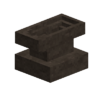
|
Yunque | Crafting | Manual and mechanized smithing. |
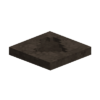
|
Hacha | Harvesting | Chopping leaf, plant, and wood blocks, including trees, logs, planks, fences, gates, and other wooden building components; creates firewood. |
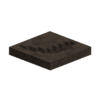
|
Falx | Combat | Mob damage, melee combat weapon. |
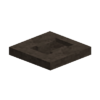
|
Martillo | Crafting | Crushing ores, crystal clusters, and certain soft stones; crafting components for mechanical power, item transportation, and steel carburization; polishing stone; cutting stone brick. |
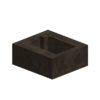
|
Helvehammer | Crafting | Mechanized smithing. |
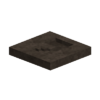
|
Azada | Crafting | Tilling and converting soil for farming. |
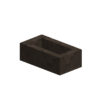
|
Ingots | Crafting | Ingot distribution, which can be used for manual and mechanized smithing and crafting components. |
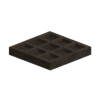
|
Armadura laminar | Combat | Creating and repairing body lamellar armor. |
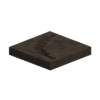
|
Pico | Harvesting | Mining ceramic, rock, stone, ore, metal, and ice blocks. |
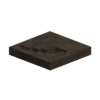
|
Pico de prospección | Harvesting | Damaging rock blocks for long and short range ore and mineral detection. |
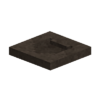
|
Shovel | Harvesting | Digging clay, gravel, peat, sand, soil, and snow blocks. |
Tipos de metal
Hay 27 tipos de metal disponibles para su recolección y uso, 14 metales moldeables y 13 metales no moldeables. De esos metales moldeables, 6 son escalonados, o ligados a la progresión a través de las eras metalúrgicas, y 8 son no escalonados, que aunque útiles, no contribuyen a ningún avance por méritos propios.
There are 27 types of metal available for collection and usage, 14 castable metals and 13 uncastable metals. Of those castable metals, 6 are tiered, or tied to progression through the metallurgic ages, and 8 are untiered, which while useful, do not contribute to any advancement on their own merits.
Metales moldeables
| Ingot | Nugget | Bits | Metal | Geologic Name | Metal Type | Tier | Alloy% | % Conversion in nuggets |
Smelting Temperature | Casting Uses |
|---|---|---|---|---|---|---|---|---|---|---|
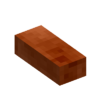
|
 
|

|
Cobre | Native copper Malachite |
Pure | 2 | ❌ | ❌ | 1084°C | Armor, ingots, tools, weapons, nails and strips |
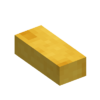
|

|

|
Oro | Native gold | Pure | 2 | ❌ | ❌ | 1063°C | Armor, ingots, tools, weapons, nails and strips |
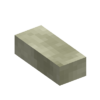
|

|

|
Plata | Native silver | Pure | 2 | ❌ | ❌ | 961°C | Armor, ingots, tools, weapons, nails and strips |
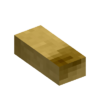
|
❌ | 
|
Bronce | ❌ | Alloy | 3 | Copper: 88 - 92% Tin: 8 - 12% |
Copper: 18 Tin: 2 |
950°C | Armor, ingots, tools, weapons, nails and strips |
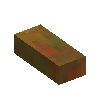
|
❌ | 
|
Bronce | ❌ | Alloy | 3 | Bismuth: 10 - 20% Copper: 50 - 70% Zinc: 20 - 30% |
Bismuth: 2 - 4 Copper: 10 - 14 Zinc: 4 - 6 |
850°C | Armor, ingots, tools, weapons, nails and strips |
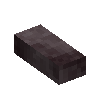
|
❌ | 
|
Bronce | ❌ | Alloy | 3 | Copper: 68 - 84% Gold: 8 -16% Silver: 8 -16% |
Copper: 16 Gold: 2 Silver: 2 |
1020°C | Armor, ingots, tools, weapons, nails and strips |
| Ingot | Nugget | Bits | Metal | Geologic Name | Metal Type | Tier | Alloy% | % Conversion in nuggets |
Smelting Temperature | Casting Uses |
|---|---|---|---|---|---|---|---|---|---|---|
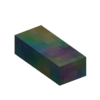
|

|

|
Bismuto | Bismuthinite | Pure | ❌ | ❌ | ❌ | 271°C | Ingots |
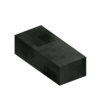
|

|

|
Plomo | Galena | Pure | ❌ | ❌ | ❌ | 327°C | Ingots, leaded glass panes |
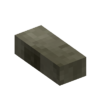
|

|

|
Estaño | Cassiterite | Pure | ❌ | ❌ | ❌ | 232°C | Ingots |
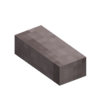
|

|

|
Zinc | Sphalerite | Pure | ❌ | ❌ | ❌ | 419°C | Ingots |
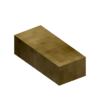
|
❌ | 
|
Latón | ❌ | Alloy | ❌ | Copper: 60 - 70% Zinc: 30 - 40% |
Copper: 12 - 14 Zinc: 6 - 8 |
327°C | Ingots |
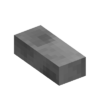
|
❌ | 
|
Elaboración del alcohol | ❌ | Alloy | ❌ | Lead: 45 - 55% Tin: 45 - 55% |
Lead: 9 - 11 Tin: 9 - 11 |
327 °C | Alcohol distillation, ingots |
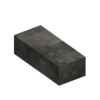
|
❌ | 
|
Molybdochalkos | ❌ | Alloy | ❌ | Copper: 8 - 12% Lead: 88 - 92% |
Copper: 2 Lead: 18 |
902 °C | Ingots |
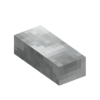
|
❌ | 
|
Elaboración del alcohol | ❌ | Alloy | ❌ | Silver: 40 - 50% Tin: 50 - 60% |
Silver: 8 - 10 Tin: 10 - 12 |
758 °C | Alcohol distillation, ingots |
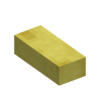
|
❌ | 
|
Electrum | ❌ | Alloy | ❌ | Gold: 40 - 60% Silver: 40 - 60% |
Gold: 8 - 12 Silver: 8 - 12 |
1010 °C | Rift Ward, Jonas assemblies, tools, ingots |
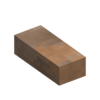
|
❌ | 
|
Cupronickel | ❌ | Alloy | ❌ | Copper: 65 - 75 % Nickel: 25 - 35% |
Copper: 13 - 15 Nickel: 5 - 7 |
1171 °C | Jonas assemblies, ingots, nails and strips |
Metales no moldeables
These metals can be found within the game’s asset library or in game, but cannot currently be smelted, cast, and/or worked.
| Ingot | Nugget | Bits | Metal | Geologic Name | Metal Type | Tier | Alloy% | % Conversion in nuggets |
Smelting Temperature | Casting Uses |
|---|---|---|---|---|---|---|---|---|---|---|
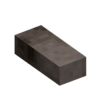
|
   
|

|
Hierro | Hematite Limonite Magnetite |
Pure | 4 | ❌ | ❌ | 1482°C | ❌ |
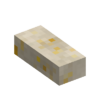
|

|

|
Meteoric Iron | ❌ | Pure | 4 | ❌ | ❌ | 1476°C | ❌ |
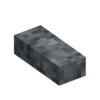 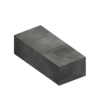
|
❌ |  
|
Acero | ❌ | Pure | 5 | ❌ | ❌ | 1602°C 1502°C |
❌ |
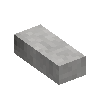
|

|

|
Chromium | Chromite | ❌ | ❌ | ❌ | ❌ | 1907°C | ❌ |
| ❌ | 
|
❌ | Manganese | Rhodochrosite | ❌ | ❌ | ❌ | ❌ | ❌ | ❌ |
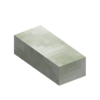
|

|

|
Nickel | Pentlandite | Pure | ❌ | ❌ | ❌ | 1455 °C | ❌ |
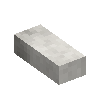
|
❌ | 
|
Platinum | ❌ | ❌ | ❌ | ❌ | ❌ | 1770°C | ❌ |
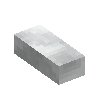
|
❌ | 
|
Rhodium | ❌ | ❌ | ❌ | ❌ | ❌ | ❌ | ❌ |
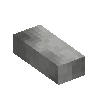
|
❌ | 
|
Stainless Steel | ❌ | ❌ | ❌ | ❌ | ❌ | ❌ | ❌ |
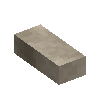
|

|

|
Titanium | Ilmenite | ❌ | ❌ | ❌ | ❌ | 1668°C | ❌ |
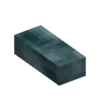
|

|

|
Uranium | Uranium | ❌ | ❌ | ❌ | ❌ | ❌ | ❌ |
| ❌ | 
|
❌ | Tungsten | Wolframite | ❌ | ❌ | ❌ | ❌ | ❌ | ❌ |
Vídeos tutoriales de fundición
| Ores, metals and minerals | |
|---|---|
| Guides | Ore Deposits • Metals |
| Metals | Copper • Iron • Meteoric iron • Gold • Silver • Lead • Tin • Zinc • Bismuth • Titanium (Ilmenite) • Nickel |
| Alloys | Bronze (Tin bronze, bismuth bronze, black bronze) • Steel • Brass • Solder (Lead solder, Silver solder) • Molybdochalkos • Cupronickel • Electrum |
| Minerals | Alum • Borax • Cinnabar • Coal • Halite (Salt) • Lapis lazuli • Quartz • Saltpeter • Sulfur • Sylvite (Potash) |
| Tools | Pickaxe • Hammer • Prospecting Pick • Crucible • Forge • Ore blasting bomb • Quern • Anvil • Bloomery • Helve hammer • Pulverizer |
| Other | Gemstones |
| Related mechanics | Panning • Mining • Clay forming • Casting • Smithing • Steel making |
| Wiki Navigation | |
|---|---|
| Vintage Story | Guías • Preguntas más frecuentes (FAQ) • Vintage Story Original Soundtrack • Versiones • Controles |
| Mecánicas de juego | Fabricación • Talla Lítica • Alfarería • Herrería • Cocina • Temperatura • Hambre • Minería • Estabilidad temporal • Energía mecánica • Comercio • Agricultura • Ganadería |
| Mundo | Generación del Mundo • Biomas • Clima • Tormentas temporales |
| Objetos | Herramientas • Armas • Armadura • Ropa • Mochilas • Materiales • Comida |
| Bloques | Terreno • Plantas • Decorativo • Iluminación • Functional • Minerales |
| Entidades | Entidades hostiles • Animales • NPCs • Jugadores |
| Miscellaneous | List of client commands • List of server commands • Creative Starter Guide • Bot System • How_to_use_WorldEdit • Cinematic Camera • Adjustable FPS Video Recording • ServerBlockTicking |
